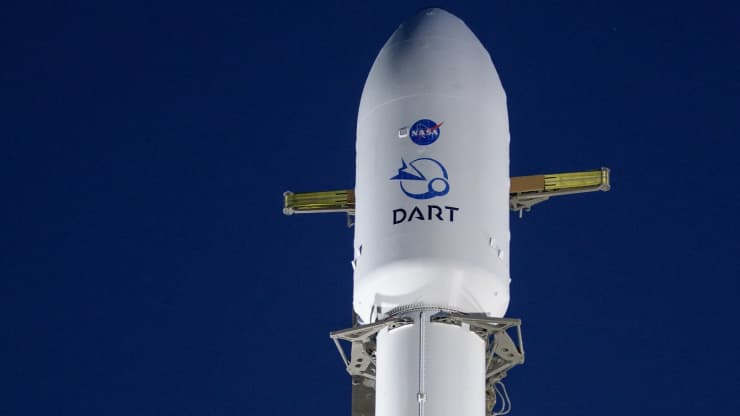Lighting up the California coastline early in the morning of Wednesday, a SpaceX Falcon 9 rocket carried NASA’s Double Asteroid Direction Test (DART) spacecraft off the planet to begin its one-way trip to crash into an asteroid.
NASA’s Double Asteroid Redirection Test (DART) has been launched from Vandenberg Space Force Base in California early Wednesday morning (Nov. 24) at 1:21 a.m. EST, NASA announced.
The Double Asteroid Redirection Test, or DART, “will be the first demonstration of the ‘kinetic impactor technique in which a spacecraft deliberately collides with a known asteroid at high speed to change the asteroid’s motion in space,” said Lindley Johnson, NASA’s Planetary Defense Officer, on NASA’s website.
“This technique is thought to be the most technologically mature approach for mitigating a potentially hazardous asteroid, and it will help planetary defense experts refine asteroid kinetic impactor computer models, giving insight into how we could deflect potentially dangerous near-Earth objects in the future,” he added.
The binary near-Earth asteroid system Didymos, of which Dimorphos is a moonlet, is not a threat to Earth, NASA explained on its official website, making it an “ideal candidate for DART.”
“This asteroid system is a perfect testing ground to see if intentionally crashing a spacecraft into an asteroid is an effective way to change its course, should an Earth-threatening asteroid be discovered in the future,” according to a statement from Johns Hopkins University Applied Physics Laboratory.
After separation from the launch vehicle, the DART spacecraft will intercept Dimorphos in late September in 2022, when the Didymos system is within 11 million kilometers of Earth, enabling observations by ground-based telescopes and planetary radar to measure the change in momentum imparted to the moonlet.
NASA Live: Official Stream of NASA TV:
A global media for the latest news, entertainment, music fashion, and more.




